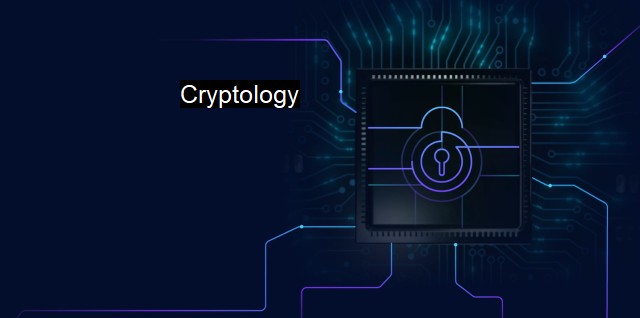What is Cryptology?
Cryptology and Cybersecurity: Securing Sensitive Information through Cryptography
Cryptology is a branch of cybersecurity that primarily involves the mathematical study of set algorithms to securely pass information from sender to receiver. The term "Cryptology" is derived from the Greek language components "Kryptos" and "Logos," which translates to "hidden, concealed, and covered" and "word," respectively. central to cryptology are encryption (encoding data/information to restrict access) and decryption (decoding data/information to ensure recipients have unrestricted access).Displaying its significant role, cryptology performs various functions in cybersecurity and the antivirus industry to ensure the optimal balance between accessibility and data protection. This science makes possible rendered exchanges of information, crucial for our modern communication and technological systems.
In practice, cryptology's effectiveness is particularly evident in its ability to provide data integrity, confidentiality, and authenticity during online transactions, making it indispensable for protecting classified and sensitive data such as financial transactions in online banking or credit card information for online shopping.
The connection between cryptology and cybersecurity is most obviously seen in cryptography. Cryptography is essentially applied cryptology. It encompasses the explicit and practical use of algorithms to encrypt and decrypt data securely, with complex mathematical theory underpinning it. This makes decryption without the required algorithm or 'key' nearly implposible - hence ensuring data safety.
Cryptosystems, the primary utility of applied cryptology, are either symmetric or asymmetric depending on the encryption and decryption stages. For symmetric cryptosystems, a single key encrypts and decrypts. for asymmetric cryptosystems, individuals use separate public and private keys wherein one key has encryption capabilities, while the other performs decryption.
Despite overarching benefits in maintaining data security, hackers pose a constant threat by exploiting weak points in cryptosystem designs - hence the need for modernization and consistent upgrades. Although state-of-the-art cryptographic solutions aren't always hacker proof, the effort used in decrypting such data tends to deter hackers from gaining unauthorized access.
Antivirus solutions rely significantly on cryptology too. Antivirus systems use encryption algorithms to regularly provide updated virus definitions and updates, thereby keeping systems up-to-speed and secure from latest threats. The secure transfer of these updates is vital to compromise protection, and relies heavily on the power of cryptography.
Most antivirus applications encrypt their data to allay successful interception or fraudulent usage by cybercriminals. The antivirus does not merely guard the system against hackers and cyber threats; it uses cryptology to ensure the solutions when infected systems communicate with the antivirus provider's server during virus scans or database updates aren't tampered with. Thus, permitting complete discretion to software end-users.
Cryptology use covers password protection as well- a simple method to restrict unauthorized user access. Many programs regularly carry out the encryption of password databases, effectively camouflaging user data and further aggravating decryption for looming cyber threats. The option to encrypt saved passwords aims to systemize secure day-to-day operations.
Cryptology also dictates secure sockets layer (SSL) and transport layer security (TLS) functioning. These cryptographic protocols encrypt data exchanges between systems for confidentiality protection during information transmission. Being the primary defence used in web browser transactions and email exchanges, cryptology, without a doubt, continues to play a significant role in cybersecurity on a large scale.
Blockchain technology provides an excellent example of cryptography application through which every transaction requires encryption and linking in a way that attempts to manipulate the transaction chain turned out to be transparent, thereby minimizing clandestine amendments. As this technology progresses continuously, so does cryptology's remarkable applications.
In the modern digital age where data breaches are frequent and potentially destructive, cryptology remains an essential cornerstone of cybersecurity and antivirus strategies. Its role in protective technologies cannot be understated – from securing online transactions to password encryptions and essential antivirus updates. Understanding cryptology can provide robust protection against the very real threat of cyber-attacks, offering significantly improved security measures in our rapidly advancing information age. As an ever-evolving science, cryptology continues to adapt to new challenges in cryptography, remaining a vital part of privacy and security online.

Cryptology FAQs
What is cryptology?
Cryptology refers to the study and practice of encryption and decryption, which involves creating codes and ciphers to secure information and protect it from unauthorized access.What is the difference between cryptography and cryptanalysis?
Cryptography is the process of creating codes and ciphers to protect information, while cryptanalysis is the process of decoding or breaking those codes to gain access to the protected information.How is cryptology used in cybersecurity?
Cryptology is a key aspect of cybersecurity because it allows sensitive information and data to be protected from potential cyber threats. This includes encrypting passwords, messages, and other forms of digital communication to prevent unauthorized access or interception.What is the role of cryptology in antivirus software?
Cryptology plays an important role in antivirus software by identifying and decrypting malicious code or malware that has been encrypted or hidden to avoid detection. This helps antivirus software to identify and remove potential cyber threats before they can cause damage or compromise sensitive information.| | A | | | B | | | C | | | D | | | E | | | F | | | G | | | H | | | I | | | J | | | K | | | L | | | M | |
| | N | | | O | | | P | | | Q | | | R | | | S | | | T | | | U | | | V | | | W | | | X | | | Y | | | Z | |
| | 1 | | | 2 | | | 3 | | | 4 | | | 7 | | | 8 | | |||||||